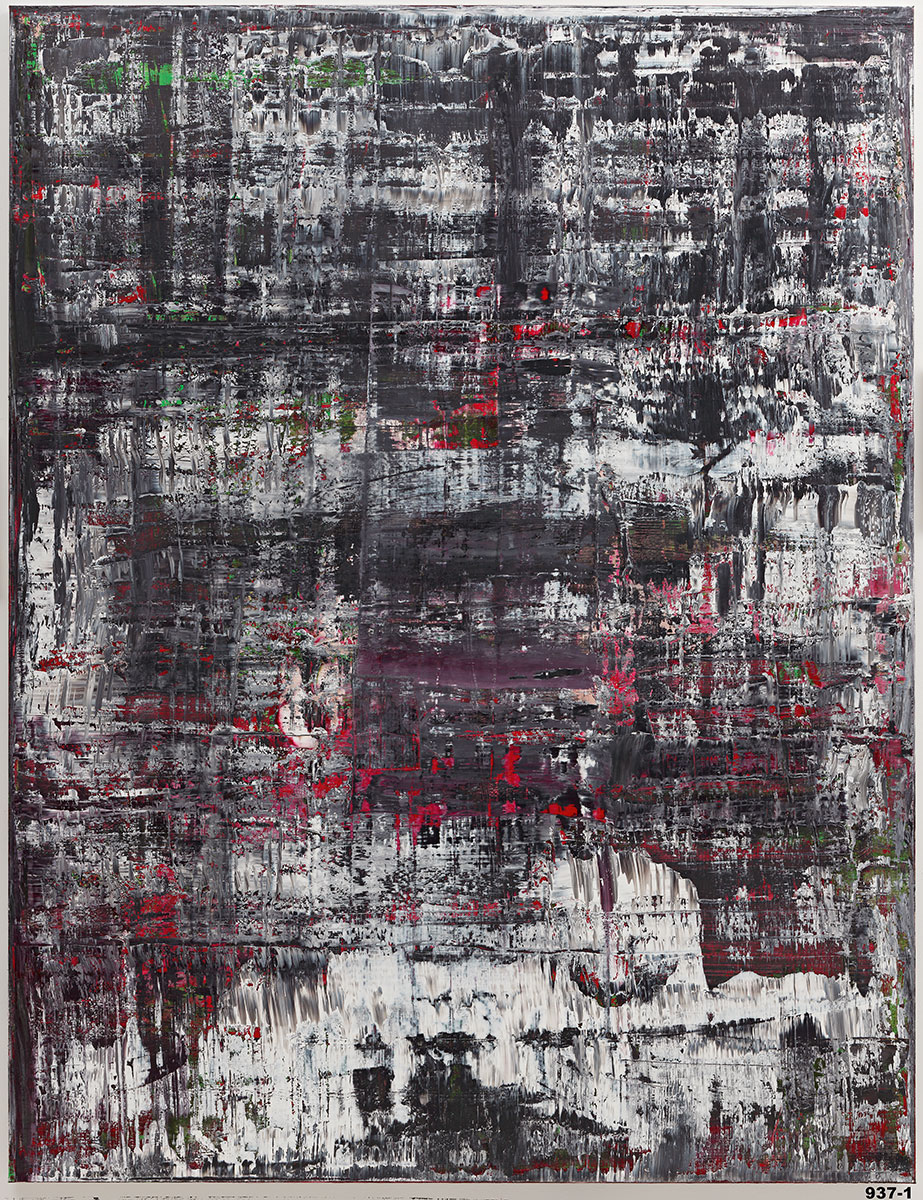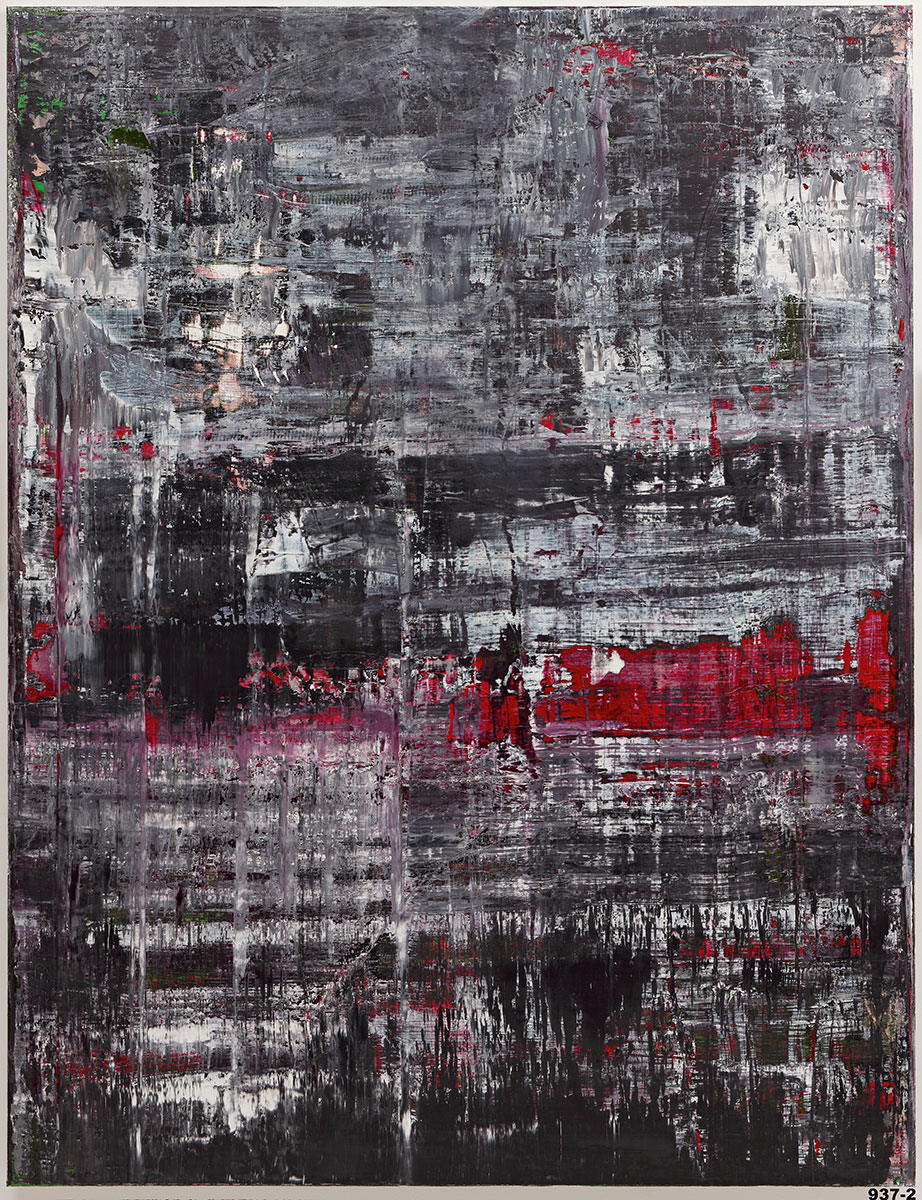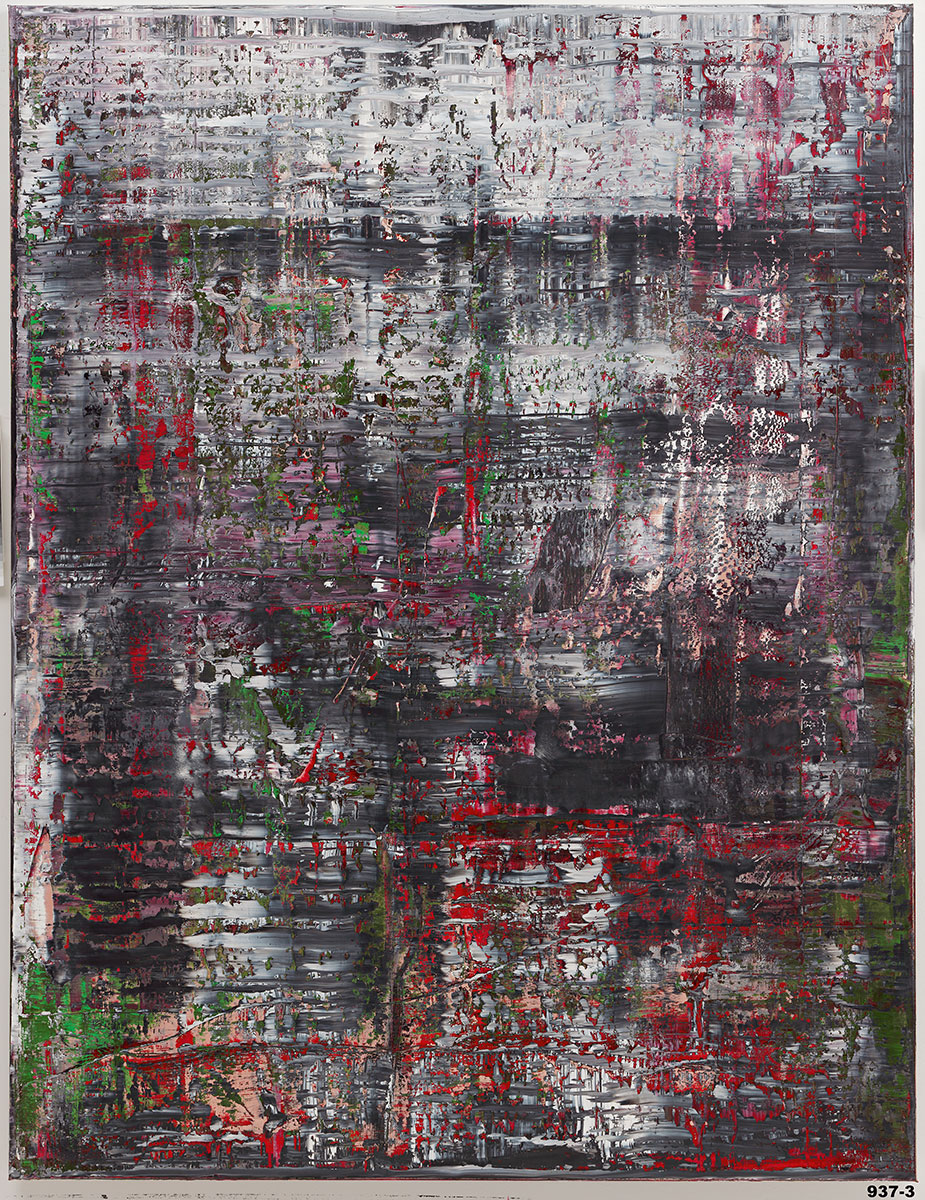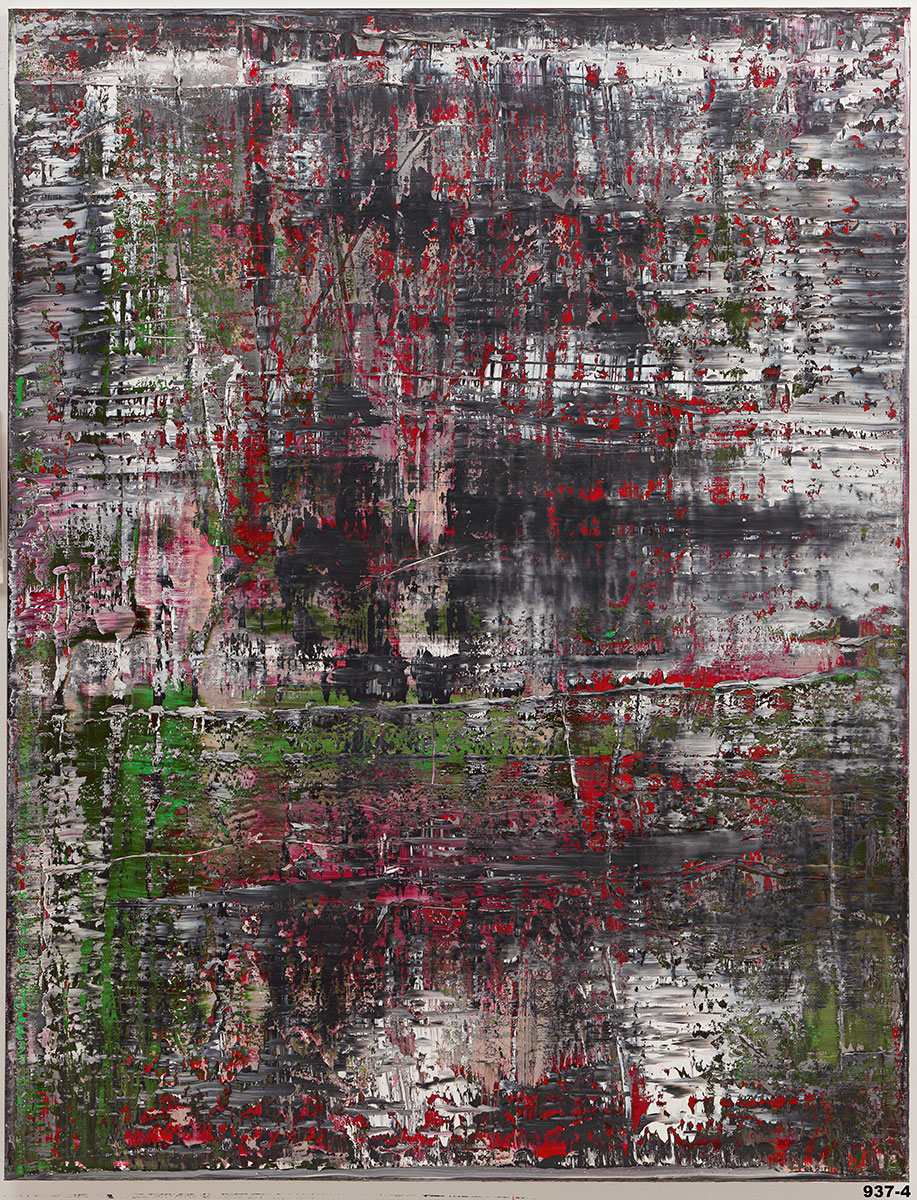PRESENTATION: Gerhard Richter-Birkenau Paintings
 Gerhard Richter is one of the most influential contemporary artists and is often called the renewer of post-war painting. Richter analysed the traditional painting genres (still life, portrait, landscape), the visual idiom of modern painting (e.g. monochromy, abstraction, grids etc.) and the challenges for the medium in our digital culture. He broadened the concept of painting in dialogue with other disciplines such as photography and sculpture.
Gerhard Richter is one of the most influential contemporary artists and is often called the renewer of post-war painting. Richter analysed the traditional painting genres (still life, portrait, landscape), the visual idiom of modern painting (e.g. monochromy, abstraction, grids etc.) and the challenges for the medium in our digital culture. He broadened the concept of painting in dialogue with other disciplines such as photography and sculpture.
By Dimitris Lempesis
Photo: Kunstsammlung Nordrhein-Westfalen Archive
In his solo exhibition “Birkenau-Paintings, Drawings, Overpainted Photographs”, Gerhard Richter presents the “Birkenau” cycle created in 2014. The four photographs that serve Richter as the starting point for his “Birkenau” cycle were taken in August 1944 by Jewish prisoners who were part of the so-called “Sonderkommando” (special unit) of the Auschwitz-Birkenau concentration camp. The term was used by the Nazi for prisoners who were forced to assist in the murder of prisoners in gas chambers and the subsequent burning of the bodies. Using a camera smuggled into the camp, clandestinely and at the risk of their lives, Alberto Errera, who presumably triggered the shutter, David Szmulewski and other members of the “Sonderkommando” managed to take four photographs showing the area around Crematorium V. These are the only known photographs from the extermination camp taken by the victims themselves and were only made public after the end of the Second World War. Gerhard Richter has known at least one of the photos since his studies at the Academy of Fine Arts in Dresden. However, it was only after his flight to the West in 1961 that he began to deal with the subject of the Holocaust, collecting motifs and using them as sources for his painting. These first attempts, however, did not lead to a satisfactory solution for him. He thus destroyed the works “Execution” and “Diary”, created in the early 1960s. In 1967, Richter included one of the photos taken by the “Sonderkommando” in his “Atlas”, the collection of photographs, newspaper clippings, and sketches that serve as source images for his paintings. In the mid-1960s, he created the works “Mr. Heyde”, “Uncle Rudi”, “Aunt Marianne”, and “Family at the Seaside”, each painted from a photograph, which deal with the German past and his own family. In the 1990s, Richter again attempted to paint from photos from concentration camps, as evidenced by the first sketches for the entrance hall of the German Bundestag (1997). He rejected this idea as well and instead proposed the re-verse glass painting “Black-Red-Gold” as a sign of a new beginning.
Richter’s artistic exploration took place against the backdrop of the discussions held in the postwar years about the conditions of a cultural practice after the Holocaust, the represent-ability of Nazi crimes, and the possible forms of a culture of remembrance. As shown above, the artist stepped back each time from direct depiction and decided against painting from the photographs taken in the concentration camp. As late as 2011, in an interview with Nicolas Serota, he called them “unpaintable”. Finally, towards the end of 2013, Richter began to transfer the four photos onto the canvases. When the result did not meet his expectations, he painted over them until the figuration disappeared. Two approaches practiced by Richter meet here: painting from photographic sources and painting over a motif. This places the work in a relationship of tension between realism and abstraction, photography and painting: a feature that characterizes Gerhard Richter’s entire oeuvre. Richter uses a procedure that determines his “Abstract Paintings” created since the mid-1980s. He applies several layers of paint to the canvas with a self-constructed squeegee and drags them across the picture’s surface. The paint is distributed unevenly, with the lower levels shining through in some places, in others disappearing completely under the overpaint or emerging surprisingly through scraping. The result is an interplay of chance and conscious decisions by the artist. Unlike the colorful, gestural abstractions of recent decades, the “Birkenau” paintings are of-ten perceived as more restrained and hesitant. The color spectrum is reduced to only a few colors—black, white, and the complementary colors green and red. These four abstract paintings are shown together with four gray mirrors that hang opposite the pictures, as well as prints based on four photographs from the extermination camp. Together, they form a spatial installation characterized by reflections and references. The “Birkenau” cycle” deals with fundamental questions about the possibilities and limits of painting and representation. With this, Gerhard Richter finally found a way of dealing with and a form for a theme that he addressed repeatedly over the last six decades. With his “Birkenau” cycle, Richter also does not claim to depict the Holocaust, but creates a space of memory and reflection despite this impossibility.
The exhibition is complemented by a selection of the artist’s overpainted photo-graphs and new drawings, which frame Richter’s painterly approach to “Birkenau” on a conceptual level. For Gerhard Richter, who sees himself primarily as a painter, drawing was a medium he rarely resorted to. In recent years, however, he has increasingly devoted him-self to drawing, exploring a variety of techniques: pencil, oil pastel, or ink pen. These are abstract works, generally without a compositional center, characterized by serenity and precision. The basis for the overpaintings, which the artist has created since 1989, are primarily photo prints in the format 10 x 15 cm. They are photographs from his own collection: snapshots of visits to museums, trips, or walks. Here, the tension between photography and painting is once again thematized.
Photo: Gerhard Richter, photograph of drawing 14.4.2020 (5), photograph of drawing 14.4.2020 (6), photographs of drawings, © Gerhard Richter 2021. Installation view K21, Kunstsammlung Nordrhein-Westfalen 2021, photo: Achim Kukulies
Info: K21-Kunstsammlung Nordrhein-Westfalen, Ständehausstraße 1, Düsseldorf, Germany, Duration: 18/12/2021-24/4/2022, Days & Hours: Tue-Fri 10;00-18:00, Sat-Sun 11:00-18:00, www.kunstsammlung.de




